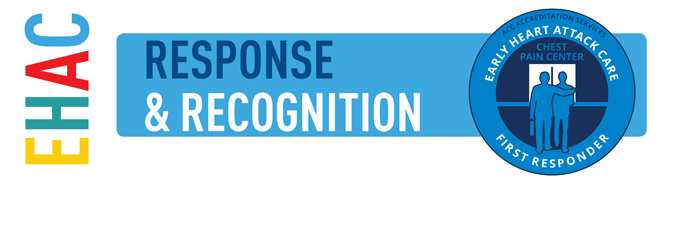EHAC Course:
Standard Course: Section 5 What is Early Heart Attack Care (EHAC)?

Early heart attack care consists of two parts -- recognition and response. Recognize the subtle early warning signs and respond by seeking immediate medical care. To save lives, we must recognize and respond.
Why is it so important to promote Early Heart Attack Care?
We know that CPR can save lives by intervening when there is an acute heart attack. We know that we can deploy an AED to shock the heart back into action. But heart damage has already occurred and sometimes death cannot be averted. Doesn’t it make more sense to check out the mild chest discomfort before a complete blockage takes place? In many cases, we can stop the progression of a heart attack if we are alert to the early signs.
Why is this necessary?
We can save not only a life, but the quality of a life.
What is the game plan?
1. Heart attacks have beginnings. Educate the public to recognize the early warning signs:
- Mild chest pain, pressure, or discomfort
- Recurring pain or discomfort in the chest that occurs with activity
- Shortness of breath
- A burning feeling in the throat and chin that can be confused with heartburn or indigestion
2. Educate the public to respond immediately to prevent heart damage and avoid sudden death. Your action can save lives. Whether you are experiencing the early symptoms yourself or you are a witness to someone else experiencing early symptoms of a heart attack, you can become an early cardiac care giver by insisting on medical attention.
3. The Early Heart Attack Care education includes the following action steps:
- Recognize the early signs and symptoms and get the patient to care as soon as possible.
- If a person collapses, call 9-1-1, perform CPR and deploy an AED.